Rachel Barenblat's Blog, page 76
March 25, 2018
Hametz, fire, and miracles: a d'var Torah for Shabbat HaGadol
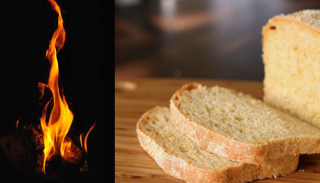 It's Shabbat HaGadol: "The Great Shabbat," the Shabbat before Pesach. The Shibolei Haleket (R. Zedekiah b. Abraham Harof Anav, d. 1275) explains, "on the Shabbat before Passover the people stay late into the afternoon... in order to hear the sermon expounding upon the laws of removing leaven..."
It's Shabbat HaGadol: "The Great Shabbat," the Shabbat before Pesach. The Shibolei Haleket (R. Zedekiah b. Abraham Harof Anav, d. 1275) explains, "on the Shabbat before Passover the people stay late into the afternoon... in order to hear the sermon expounding upon the laws of removing leaven..."
Everybody ready to listen to instructions for kashering your kitchens?
Just kidding. Though I am going to talk about hametz, and this week's Torah portion, and miracles.
The word חמץ / hametz comes from lichmotz, to sour or ferment. Hametz is grain that has fermented. When we left Egypt, we didn't have time for natural sourdough to leaven our bread, so we baked flat crackers and left in haste. Torah offers us two instructions 1) eat matzah as we re-live the Exodus, and 2) get rid of leaven. The matzah part, we'll do during Pesach. The getting-rid-of-leaven part, we have to do in advance.
Today is Shabbes, our foretaste of the world to come. Today we do no work. We rest and are ensouled, as was God on the first Shabbat. But tomorrow, and in the weekdays to come, many of us may be doing some spring cleaning as we prepare to rid our homes of leaven for a week. Of course, getting rid of leaven doesn't "just" mean getting rid of leaven. It can also mean a kind of spiritual housecleaning.
Hametz can represent ego, what puffs us up internally. The therapists among us might note that ego is important: indeed it is. Without a healthy ego, you'd be in trouble. But if one's ego gets too big, that's a problem too. The internal search for hametz is an invitation to examine ego and to discern what work we need. Some need to discard the hametz of needing to be the center of attention. Others need to discard the hametz of not wanting to take up the space we deserve.
Another interpretation: hametz is that within us which has become sour. Old stories, old narratives, old scripts. Old ideas about "us" and "them," old angers, old hurts. Look inside: are you carrying the memory of someone who made you angry? Are you holding on to old grievances? Search your heart: what's the old stuff you need to scrape up and throw away?
That's where this week's Torah portion, Tzav, comes in. This is the ritual of the burnt offering, says God. Keep the fire burning all night until morning. And every morning, take the ashes outside the camp, to a clean place. Notice that removing the ashes is mentioned right up there with burning the offering. Because if the ashes are allowed to accumulate, they'll choke the fire.
The spiritual work of keeping our fires burning belongs to all of us. It's our job to feed the fires of hope, the fires of justice, the fires of our own spiritual lives that fuel our work toward a world redeemed. Keep the fire burning all night: even in our "dark" times, when we feel trapped, even crushed, by life's narrow places.
The thing is, over the course of a year our fires get choked with ash. Disappointments and cynicism and overwork and burnout keep our fires from burning as bright as they could be. This week's Torah portion reminds us to clean out our ashes. (It's no coincidence that Tzav comes right before Pesach.)
Pesach offers us spiritual renewal. Pesach invites us to live in the as-if -- as if we were redeemed; as if we were free; as if all of this world's broken places and ugly "isms" were healed. But in order for our spiritual fires to be renewed, we have to clean out the ashes. We have to get rid of the hametz, the schmutz, the ashes and crumbs and remnants of the old year that have become sour and dusty, in order to become ready to be free.
Ridding ourselves of the old year's mistakes and mis-steps in order to begin again: is this making you think of any other time of year? If this inner work sounds like the work we do before Rosh Hashanah, that's because it is.
I learned from my teacher and friend Rabbi Mike Moskowitz that we work on our imperfections both during Nissan (now) and Tishri (the High Holidays), and we can dedicate one to working on our "external" stuff and the other to what's hidden or internal. The Megaleh Amukot (Rabbi Nathan Nata Spira, d. 1633) wrote that these two months of Nissan and Tishri correspond to each other, because during each of these seasons we're called to seek out and destroy hametz in body and soul.
Another link between Passover preparation and the teshuvah work of the new year: this season, too, is called a new year. Talmud teaches that we have four "New Years"es. The new moon of Tishri is the new year for years. The new year for trees, Tu BiShvat, is in deep winter. The new year for animals is on 1 Elul. And then there's the new moon of Nisan, ushering in the month containing Pesach... and this entire month has the holiness of a Rosh Chodesh, a New Moon. This whole month is our springtime new year.
Right now the moon is waxing. The light of the moon can represent God's presence -- sometimes visible, and sometimes not, but always with us. Right now there's more moonlight every night, and we're invited to experience more connection with holiness with each passing day. Our work now is to clean house, spiritually, by the light of this waxing moon -- in order to be internally ready to choose freedom.
When you think of a miracle, what do you think of? Maybe the parting of the Sea of Reeds: that's a big, shiny, visible miracle from the Passover story. But hope growing in tight places is also a miracle. The fact that we can make teshuvah is a miracle. The fact that we can grow and change is a miracle. The fact that we can do our inner work and emerge transformed is a miracle. This is a month of miracles -- as evidenced by its name: the name Nissan comes from נס / nes, "miracle."
On Thursday night, some of us will hide crusts of bread around our homes. We'll search for them by the light of a candle. And then on the morning of the day that will become Pesach we'll burn them, destroying the old year's hametz. Whether or not you engage literally in that ancient custom of bedikat hametz (searching for / destroying leaven), you can do that work spiritually. (And we'll begin some of it together during our contemplative mincha service this afternoon.)
What is the old stuff you need to root out and discard in order to walk unencumbered into freedom?
How can you "carry out the ashes" so the altar of your heart can become clean and clear, ready to burn with the fire of hope, the fire of justice, the fire of new beginnings?
This is the d'var Torah I offered at my shul this morning (cross-posted to my From the Rabbi blog.)

Omer poems
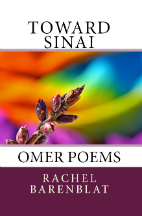 In 2015 I wrote poems for each day of the Omer -- the 49-day journey between Pesach and Shavuot, between liberation and revelation. In 2016 those poems were collected and published (sometimes in revised form) in the collection Toward Sinai: Omer Poems.
In 2015 I wrote poems for each day of the Omer -- the 49-day journey between Pesach and Shavuot, between liberation and revelation. In 2016 those poems were collected and published (sometimes in revised form) in the collection Toward Sinai: Omer Poems.
Here are my 49 Omer poems collected in one place, for ease of navigation. Feel free to bookmark this page and return to it during each day of the Omer (and/or to pick up a copy of the collection and use the book as part of your Omer counting practice -- it's available for $12 on Amazon.)
Day 1: One Step
Day 2: In the Beginning
Day 3: Third Generation
Day 4: Where and when
Day 5: Measure
Day 6: Roots
Day 7: Blessing
Day 8: What it Means to Pray
Day 9: Song at the Sea
Day 10: Journey
Day 11: Tree Pose
Day 12: Meditate on them
Day 13: Generation
Day 14: Fortnight
Day 15: Fifteen
Day 16: Shoe Seeker
Day 17: Taste and See
Day 18: Secret Prayers
Day 19: Seaside
Day 20: Windows on the World
Day 21: Good Heart
Day 22: Endurance
Day 23: Evening Prayer
Day 24: Stone Work
Day 25: Even If
Day 26: For the Bones
Day 27: Labyrinth
Day 28: Magnetic North
Day 29: Love God
Day 30: What the Creator Creates
Day 31: Seven Stops
Day 32: Sing Praise
Day 33: Good
Day 34: Unspoken
Day 35: Sachia Mata
Day 36: Six
Day 37: Prairie Wedding
Day 38: Burden
Day 39: Opening the Well
Day 40: Terumah
Day 41: Foundation
Day 42: Torah is Her Name
Day 43: Beyond Number
Day 44: Song of the Wetland
Day 45: Intercession
Day 46: Four Days
Day 47: Near a Woman
Day 48: The Wedding
Day 49: Back to the Summit
May the Counting of the Omer be a blessing for you, and may it help you open your heart to revelation!

March 21, 2018
Shavuot retreat in the Hudson Valley
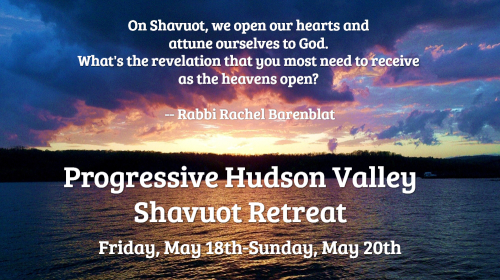 I am so excited to be able to share this news: I'm partnering with some of my dear colleagues-and-friends (and their communities -- Rabbi David Markus of Temple Beth El of City Island, Rabbi Brent Spodek of Beacon Hebrew Alliance, and Rabbi Ben Newman of Shtiebel) on a Shavuot weekend retreat in the Hudson Valley.
I am so excited to be able to share this news: I'm partnering with some of my dear colleagues-and-friends (and their communities -- Rabbi David Markus of Temple Beth El of City Island, Rabbi Brent Spodek of Beacon Hebrew Alliance, and Rabbi Ben Newman of Shtiebel) on a Shavuot weekend retreat in the Hudson Valley.
Come join us on retreat for Shavuot, the Jewish holiday that commemorates the revelation of the Torah on Mt. Sinai as well as the first fruits of the growing season.
To celebrate, we'll be traveling to Surprise Lake Camp in Cold Spring, NY, where we’ll gather with other seekers for an incredible opportunity to connect with powerful teachings, beautiful music, stupendous natural surroundings and each other.
We're also particularly excited to welcome scholars-in-residence Liz Alpern and Jeffrey Yoskowitz, co-founders of The Gefilteria, a new kind of food venture launched in 2012 with the mission of reimagining eastern European Jewish cuisine and adapting classic dishes to the values and tastes of a new generation.
What revelation awaits you this year? What are the emotional, intellectual and spiritual “first fruits” that you want to uplift and be thankful for? Join us, and open yourself to transformation!
Highlights include:
Incredible teachers (see the bios on our webpage!)
Daily opportunities for spiritual practice
Robust Children’s Program
Amazing hiking and more
Costs are intentionally low to enable maximal participation. And, thanks to the fine folks at the Schusterman Foundation, financial aid is available -- to apply please email BHA Administrator Faith Adams at faith@beaconhebrewalliance.org
Here's the Facebook Event page for the retreat, and here's a full description of the weekend. Register by clicking on the "Register Now" button at the top or bottom of that page. Join us!

March 19, 2018
A glimpse of the Ben Yehuda Press poetry reading in Tarrytown
On Sunday, March 18, I had the opportunity to "launch" Texts to the Holy at a Ben Yehuda Press poetry reading at the JCC in Tarrytown, New York.
The reading was organized by Maxine Silverman, a fellow Ben Yehuda Press poet. To open the reading, Maxine offered a few poems from her gorgeous collection Shiva Moon (all poems that will appear in Beside Still Waters, the mourning-and-shiva volume that Bayit is co-producing with Ben Yehuda). After that, the reading featured me alongside Yaakov Moshe, author of Is: heretical Jewish blessings and poems. (Yaakov Moshe is a heteronym for Jay Michaelson.) Jay read, and then I read, and then we traded poems for a while, riffing off of each others' work, which was neat.
Larry Yudelson (our editor and publisher at Ben Yehuda) took some video at the reading and has shared some of it online. Here's me reading "The One Who Sees Me" from Texts to the Holy :
And here's "Awake," from the same collection:
I think he'll be posting more videos soon of all three poets; follow Ben Yehuda on Facebook, or follow the Jewish Poetry Project on YouTube, if you're so inclined.
Deep thanks to Larry at Ben Yehuda, and to Dr. George Kraus and Maxine Silverman at the Shames JCC on the Hudson, for making the reading happen! (Buy my new collection online here for a mere $9.95: Texts to the Holy / Ben Yehuda Press 2018.)

March 16, 2018
The week before spring
 This is the time of year when I am most eager for the coming spring.
This is the time of year when I am most eager for the coming spring.
This year has felt scrambled. We had unseasonable warmth in February, and now that it's March we've gotten socked by a few nor'easters in a row. It feels like winter has settled in for the long haul, precisely now that we're all starting to crave the coming spring (or at least I am.)
But there's beauty in this snow-covered March landscape, if I have eyes to see. The snow reveals the passage of animals of whom I would otherwise be unaware -- little rabbit footprints outside the synagogue and outside my front door, bird footprints beneath my kitchen window feeder.
The icicles gleam when they catch the light. At shul (seen here) the melting effects of the sun have caused icicles to form at surprising angles: not pointing downward like they do at my house, but curving inward, a thicket of clear points that look like spun glass, eaves decorated by Chihuly.
Though the world is still mostly monochrome -- the white of snow, the grey of clouds, the grey-brown of bare branches -- color is beginning to return to the palette. Every now and then there is a glimpse of blue sky. The willow branches have a pale gold quality to them that makes them look sunlit even on a cloudy day.
And friends who live just a few hours south report that they've started seeing robins, harbingers of spring, scattered across their lawns. I'm glad the robins haven't made it here yet -- everything is so covered in snow, where would they go for worms? -- but I expect to see them soon.
The coming week will bring the spring equinox. The northern hemisphere is tilting toward summer, toward green, toward light. In another few months these snowbanks and icicles will be an improbable memory. For now my challenge is to see the beauty in them, even when I'm eager for what's next.

March 14, 2018
"For one who truly loves..."
"For one who truly loves, there is the commandment-like need to provide goodness for the beloved that turns the love from sentiment to substance."
My Wednesday morning coffee shop hevruta group is reading Mesillat Yesharim ("The Path of the Upright"), by Moshe Chaim Luzzatto, with commentary by Rabbi Ira Stone. This morning, one of the sentences that leapt out at me came from Stone's commentary -- the line I cited, above.
"Love of God" can be an abstract concept. What does it mean to "love" the infinite source of all? But we can understand love of another human being. The love of a (healthy) parent for a child, the love of a friend for a beloved friend. If we are lucky, we know what it is to love.
And when one loves, there is a yearning to do for the beloved. Not because it's "commanded," but because one just wants to. I give to my child not because anyone told me to, and not because of anything he will do for me in return, but just because my heart calls me to care for him.
It's easy to say "I love you." But far more important, for Luzzatto, are the actions that underpin our words. It's not enough to say; we also need to do. In relationship with a human beloved, we do whatever we can to bring sweetness to that beloved. That's what "turns the love from sentiment to substance" -- that makes it real.
Our mystical tradition teaches that each of us is enlivened by a nitzotz Elohut, a spark of divinity. The love I feel -- that motivates me to yearn to provide goodness for those whom I love -- is, in a way, love of God. Because when I love another human being, I'm also loving the spark of God within them, whether I'm aware of it or not.
(That intersection between loving others and loving God is the place out of which Texts to the Holy was written.)
Our daily liturgy reminds us to love God with all our heart, with all our soul, and with all our might. Saying those words is easy. More important, though, is doing those words. I think Luzzatto is saying that we (should) express love of God through seeking to act in a way that brings the Beloved joy. In this, we ourselves find joy.
It's a tall order. In every moment of my day I have an opportunity to choose to follow my yetzer ha-tov, my "good impulse," rather than my yetzer ha-ra (my ego, my drive, my "evil inclination"). I know how often I fall short. It's easy to fall into asking, who am I to imagine that I can give God joy?
But when trying to bring joy to God feels like more than I can grasp or manage, I can shift focus from the macrocosm to the microcosm, from the cosmic Beloved to my smaller human beloveds. And then my anxiety vanishes, and I can feel the channels of my heart opening, and it is the easiest thing in the world to let love pour through.

March 12, 2018
Sweetness from an extraordinary Shabbaton
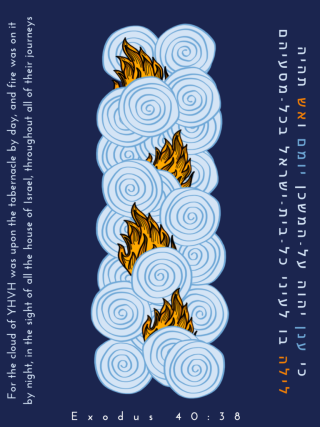 Many people, upon turning sixty, might choose to celebrate by throwing a party... or taking a trip somewhere... or perhaps trying to pretend the milestone birthday away. Not my friend and Bayit co-founder Rabbi Evan Krame.
Many people, upon turning sixty, might choose to celebrate by throwing a party... or taking a trip somewhere... or perhaps trying to pretend the milestone birthday away. Not my friend and Bayit co-founder Rabbi Evan Krame.
What he wanted for his sixtieth birthday was to learn with Rabbi Art Green, one of the Jewish world's shining lights -- and to share that learning with the community he co-founded (The Jewish Studio) and with friends, ranging from elementary school buddies with whom he's still in touch, to more recent rabbinical school friends like me.
So he planned a Shabbaton with Reb Art as the scholar-in-residence. He invited Shir Yaakov to come and share his music. And a group of his (and my) friends and colleagues stepped forward to lead prayer and offer our spiritual, musical, and liturgical gifts.
We spent Shabbes at Rockwood Manor, a house near the Potomac where I saw what were for me the year's first signs of spring -- daffodil shoots poking from the ground, flowering trees just beginning to bloom.
Reb Art taught several times throughout the weekend. He taught texts from two Hasidic masters (the Sfat Emet and the Me'or Eynayim) about the mishkan (the dwelling-place for God's presence, sometimes translated as "tabernacle") and about the inner light that enlivens Torah. R' Evan interviewed him on Saturday after lunch, and we all got to bask in the learning from that conversation about God and journey and spiritual life.
A rotating group of about a dozen rabbis and musicians co-led prayer four times over the course of our 24 hours together. (I was among them -- I got to share my "Listen Up, Y'all" on Friday night, and to lead part of the service on Shabbat morning.) This group had never led prayer together before in this configuration. I don't know how the davenen felt to the kahal (the community), but for me as one of the leaders it felt both seamless and real. Seamless as though we had been sharing leadership for years, and real because we weren't "performing," we were honest-to-God praying. (Which is as it should be!)
I think the reason it flowed so smoothly was that we were leading lich'vod (in honor of, or for the reason of,) Shabbat, and God, and the friend-and-colleague who had brought us together. None of us was leading in order to shine as an individual gem. We were leading together in order to create something more than the sum of our parts. (As I write these words it occurs to me that that's not unlike the mishkan, the tabernacle, described in the Torah portions we've been reading -- for which each person brought their own gifts as a free will offering.) That was deeply nourishing for me.
Our Saturday morning davenen was inspired by the last verse in the book of Exodus. When we were in rabbinical school, our friend and colleague Hazzan Daniel Kempin wrote a musical setting for that verse, which we taught at the start of the morning. Five of us each gave over a vort, a short teaching, about that passage over the course of the morning -- each of us shining light on a different facet of what that verse could mean. R' Evan had commissioned sketchnote artist Steve Silbert to illustrate that verse, and Steve's artwork offered a visual accompaniment to our words and our prayer.
On Shabbat afternoon, during the time between one learning session and another, some folks did yoga, while others went for a walk, while others chatted in the sunshine. (I sat in the gazebo with a handful of friends and studied some gemara with another of my Bayit co-founders, Rabbi Mike Moskowitz, which was delicious.) Reb Art taught one final time, about the red heifer and connecting with the supernal light of Torah. As the day grew dark and Shabbat prepared to depart, we harvested blessings from our time together that we will carry forward into our weekday lives. And then we made havdalah, singing our way into the new week.
I'm grateful to R' Evan for choosing to celebrate his birthday in such an extraordinarily generous way: sharing food and prayer and song and learning with so many (including me!) It was a beautiful weekend, and one I know I will carry with me for a long time.
Image: the Torah sketchnote commissioned from Steve Silbert.

March 8, 2018
On "keeping the Pesach," and gradations of practice
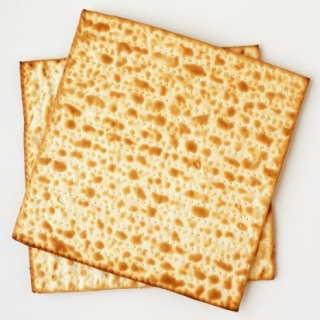 Pesach begins three weeks from tomorrow, and maybe some of you are considering "keeping the Pesach" this year. Maybe you have some anxiety about what exactly that means, or how to do it, or whether you're going to "do it wrong." What is keeping the Pesach?
Pesach begins three weeks from tomorrow, and maybe some of you are considering "keeping the Pesach" this year. Maybe you have some anxiety about what exactly that means, or how to do it, or whether you're going to "do it wrong." What is keeping the Pesach?
In Exodus 12:15 we read:
Seven days you shall eat unleavened bread; on the very first day you shall remove leaven from your houses.
At its simplest, "keeping the Pesach" means 1) eating matzah and 2) removing leaven. In some Jewish contexts there are clear guidelines for how to remove leaven from one's home, and you either follow them or you don't. But in the community that I serve there are many gradations of practice. I don't see "keeping the Pesach" as a binary. I see it as a spectrum.
At one end of the spectrum, you go to a seder or two, but otherwise your dietary practices are unchanged that week.
At the other end of the spectrum, you remove all leaven (and items made from the five leaven-able grains) from your home, and eat only natural foods (fruits and vegetables don't need a hechsher, a kosher certification marking) or foods certified as "Kosher For Passover" by a trusted rabbinic authority, and you eat on special plates that you reserve only for this week of the year, plates that have never touched a leavened grain.
There's a lot in between those choices. For instance:
1) You might choose to avoid bread for a week. Just leavened bread. If you would look at it and say, "Yep, that's bread," then don't eat it. In that case, you might still eat pasta (after all, spaghetti isn't bread). You might still eat breakfast cereals made from grain (they, too, are not bread.) But your diet would shift enough that you would notice, all week long, that this is a special time.
2) You might choose to also avoid not only actual bread but also bread-like things, from bagels to English muffins. Even sweet muffins, like blueberry or pumpkin muffins, are leavened -- so you'd avoid them too. You might choose to avoid beverages that have fermented, like beer or kombucha. In this case too, the pastas and the cereals might still feel okay to you, but the class of foods you're avoiding would be a larger one.
3) You might choose to remove from your home all things made from the five grains that our tradition considers "leaven-able." (That's wheat, barley, oats, spelt, and rye.) If water spilled into a container of flour and you left it there, the flour would eventually grow its own sourdough starter, which means that flour is "leaven-able" -- it is capable of becoming leavened under the right circumstances. Anything made from leavenable grains, you would remove from your home for a week.
4) You might choose to eat special "kosher for Pesach" pasta... or you might avoid it because it looks like and acts like "regular" pasta, and you want your diet this week to feel different.
5) No matter what your dietary practices are, you might choose to get a set of special Pesach dishes, to use during that week only, and to remind you that this is a special time, a week that is set-apart from ordinary life.
6) You might choose to eschew kitniyot (corn, rice, beans, and peas -- which have long been part of Sephardic Pesach dietary practice, but used to be forbidden in Ashkenazic practice, though today they are accepted in Reform and Conservative communities)... or you might embrace them wholeheartedly.
All of these are legitimate Jewish ways of experiencing Pesach. (My own family of origin spans that spectrum from one end to the other.) My invitation to you is to choose consciously what you want your Pesach practice to be this year... and to pay attention not only to the contents of your pantry, but also to your heart and soul. Whatever practices you take on should (ideally) serve the purpose of awakening you to the festival and its meaning (at least some of the time.)
The Jewish renewal practice of hashpa'ah (spiritual direction) invites us to ask: where is God for you in this? (If the "G-word" doesn't work for you, try: meaning, or holiness, or love.) How does this experience connect you with something greater than yourself? How will this practice renew your heart and soul -- how will it align you with holiness -- how will it open you up to transformation?
The haggadah teaches that it's incumbent on each of us to see ourselves as though we, ourselves, had been freed from slavery. Pesach comes to teach us that we can experience liberation from our narrow places, from life's constraints and constrictions. Pesach is about leaving slavery and taking the first steps toward covenant. It's about taking risks, leaping when the time is right, venturing into the unknown even though it's unknown. It's about crossing the Sea and finding ourselves in an unfamiliar wilderness on the other side. It's about new beginnings, and spring, and trust, and hope.
The word chametz (leaven) comes from the Hebrew l'chimutz, "to sour or ferment." In one Hasidic understanding, chametz represents the internal puffery of ego. Chametz can mean all of our old narratives, our baggage, the stories we tell ourselves about who we are and how the world works. Chametz can mean our own sour places, the old psychological and spiritual and emotional "stuff" that we need to clean out and throw away in order to be ready to experience freedom. Whatever you're doing with the literal chametz in your pantry, ask yourself: what is the internal chametz I need to throw away before Pesach begins?
Whatever your Pesach dietary choices are this year, may they bring you more fully into awareness of the holiday and its meanings, and may they open you more fully to transformation.
Related:
Leaven (Hametz) and What it means to keep Kosher for Passover, My Jewish Learning
A Guide to Eating on Passover, Union for Reform Judaism
What Foods Will Make Passover Meaningful for You? Jane Herman, URJ
How a Reform Jew Keeps Passover, Rabbi Barry Block
Passover, matzah, dialectics, posted here in 2006
Cross-posted to my From the Rabbi blog.

March 5, 2018
Four Worlds
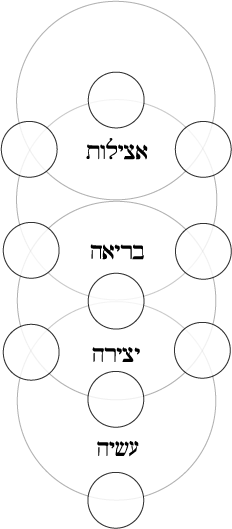 When you hear the phrase "the Four Worlds," what comes to mind?
When you hear the phrase "the Four Worlds," what comes to mind?
Maybe you think of action, emotion, thought, and spirit.
Maybe you associate the four worlds with the Tu BiShvat seder, which is often organized as a journey through the four worlds.
Maybe thanks to Tu BiShvat you associate the four worlds with the four seasons of the year, or with the four elements of earth, water, air, and fire.
Maybe you associate the four worlds with the four letters of God's holiest name, יהו׳׳ה.
Or maybe the phrase doesn't mean much to you, or leaves you confused.
The four worlds paradigm is core to Jewish renewal as I've experienced it over these last many years. For a while now I've been wanting to craft a short, (hopefully) clear explanation of the four worlds to share with y'all.
There's a new page on the Bayit website that I hope will serve this purpose: The four worlds.
If you're familiar with the four worlds: does this description work for you?
If you're not familiar with the four worlds: does this description make sense to you?
If you have questions, we'd love to hear them. Let me know!
Related: A teaching from Joel Segel on equalizers of heart and soul, 2016

March 4, 2018
Texts to the Holy: reading in Tarrytown
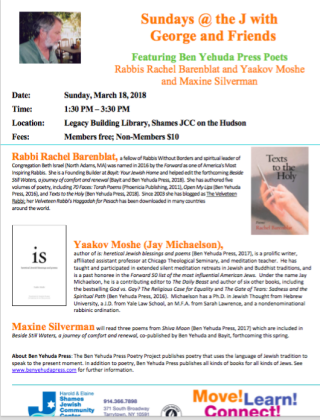 I shared poems from Texts to the Holy at a handful of readings and events while the volume was being written and revised and prepared for print.
I shared poems from Texts to the Holy at a handful of readings and events while the volume was being written and revised and prepared for print.
But the first reading from the new collection since it actually came out will take place later this month.
It's part of the "Sundays @ The J with George and Friends" series, and it's a Ben Yehuda Press reading featuring three Ben Yehuda poets: Yakov Moshe (also known as Rabbi Jay Michaelson), author of Is; Maxine Silverman, author of Shiva Moon; and myself. The reading will be hosted by Dr. George Kraus.
You can read about it on the Shames JCC website: Sunday Poetry: Rabbi Rachel Barenblat, Yakov Moshe (Jay Michaelson), and Maxine Silverman. Or, for those who don't want to click through, here are the most salient details:
Sunday, March 18
1:30-3:30pm
Free for members; $10 non-members
Books will be available for sale and signing after the reading.
If you're in or near Tarrytown, I hope you'll join us!

Rachel Barenblat's Blog
- Rachel Barenblat's profile
- 6 followers



